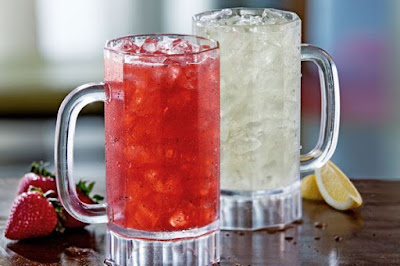A carbonated beverage is a drink which contains carbon dioxide gas. The gas dissolves when in contact with drink producing carbonic acid that makes the drink fizzy and pleasant to consume. The product is especially preferred as a cold drink in warm climates.
With an increasing number of customers becoming aware of the harmful effects of high sugar intake, the demand for traditional carbonated drinks is steadily declining, especially in mature markets like the United States (U.S.) and Western Europe. The global carbonated beverage market, therefore, has witnessed an increasing demand for low or no-sugar variants of these beverages. Diet Coke, Diet Pepsi, Coca- Cola Life, and Diet Dr. Pepper are huge market pullers.
With an increasing number of customers becoming aware of the harmful effects of high sugar intake, the demand for traditional carbonated drinks is steadily declining, especially in mature markets like the United States (U.S.) and Western Europe. The global carbonated beverage market, therefore, has witnessed an increasing demand for low or no-sugar variants of these beverages. Diet Coke, Diet Pepsi, Coca- Cola Life, and Diet Dr. Pepper are huge market pullers.
 |
| Carbonated Beverages Market |
High sugar content is creating a shift in consumer preferences
Top non-alcoholic beverage companies offer their products in a variety of packaging sizes as a strategy to increase sales. Smaller packs help customers minimize their sugar intake per serving, making it the preferred and more convenient size for consumption. The carbonated beverage market size is anticipated to witness limited growth due to increasing awareness regarding the harmful consequences of excessive sugar intake.
A key market trend that is being observed across various regions, especially in the mature markets where the growth of standard carbonated drinks has stagnated, is the introduction of products with new, unique, and exotic flavor combinations. Apart from this, drinks with functional additives are also garnering major demand.
The carbonated drinks manufacturing companies distribute their products through numerous channels, which mainly include hypermarkets, supermarkets, and general merchandisers. Moreover, food service and drinking establishments, convenience stores and gas stations, vending machine operations, and other channels like e-commerce portals are also supplying soft drinks to consumers. Despite the existence of various market mediums, the maximum amount of sales occur through the hypermarkets, supermarkets, and general merchandiser’s route.
According to market research, traditional soda based drinks dominate the global carbonated beverages market, however, with the increasing awareness regarding the harmful consequences of high sugar intake, low-calorie variants of soda or diet soda are becoming popular. Based on distribution channels, the global carbonated beverages market is segmented into hypermarkets, supermarkets, general merchandisers, food services and drinking establishments, convenience stores, and online grocery stores. Europe held approximately 34% of the global carbonated beverages market in 2018, followed by the North American region with a 28% share. The volume of sales has risen in Europe due to the increase in sales of premium quality beverages.
Top non-alcoholic beverage companies offer their products in a variety of packaging sizes as a strategy to increase sales. Smaller packs help customers minimize their sugar intake per serving, making it the preferred and more convenient size for consumption. The carbonated beverage market size is anticipated to witness limited growth due to increasing awareness regarding the harmful consequences of excessive sugar intake.
A key market trend that is being observed across various regions, especially in the mature markets where the growth of standard carbonated drinks has stagnated, is the introduction of products with new, unique, and exotic flavor combinations. Apart from this, drinks with functional additives are also garnering major demand.
The carbonated drinks manufacturing companies distribute their products through numerous channels, which mainly include hypermarkets, supermarkets, and general merchandisers. Moreover, food service and drinking establishments, convenience stores and gas stations, vending machine operations, and other channels like e-commerce portals are also supplying soft drinks to consumers. Despite the existence of various market mediums, the maximum amount of sales occur through the hypermarkets, supermarkets, and general merchandiser’s route.
According to market research, traditional soda based drinks dominate the global carbonated beverages market, however, with the increasing awareness regarding the harmful consequences of high sugar intake, low-calorie variants of soda or diet soda are becoming popular. Based on distribution channels, the global carbonated beverages market is segmented into hypermarkets, supermarkets, general merchandisers, food services and drinking establishments, convenience stores, and online grocery stores. Europe held approximately 34% of the global carbonated beverages market in 2018, followed by the North American region with a 28% share. The volume of sales has risen in Europe due to the increase in sales of premium quality beverages.


No comments:
Post a Comment